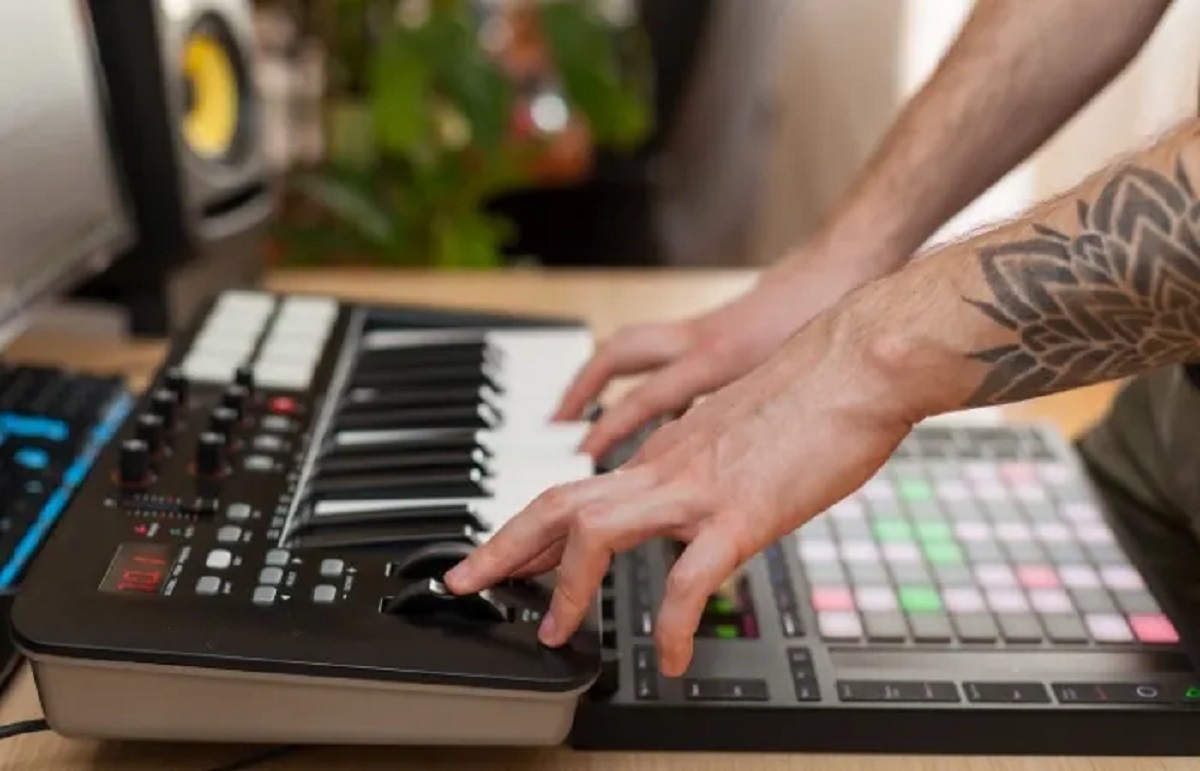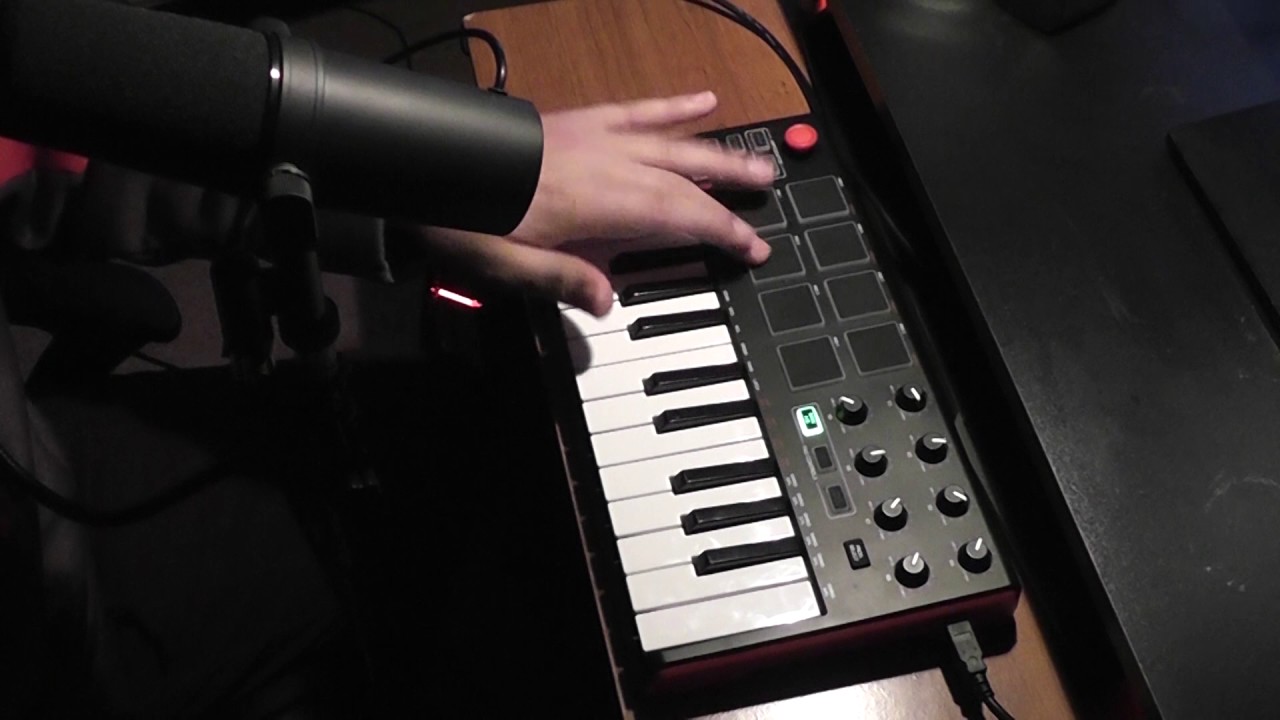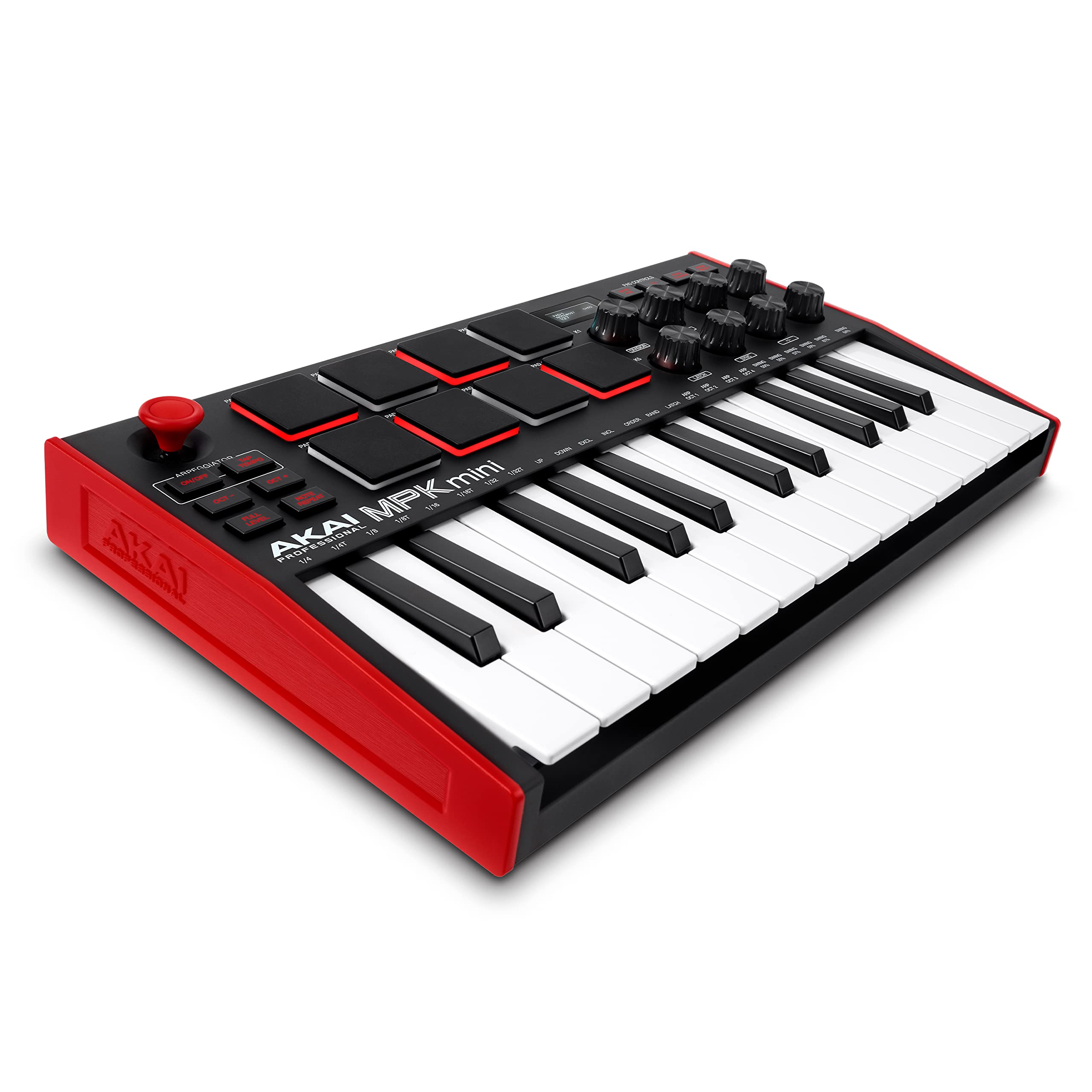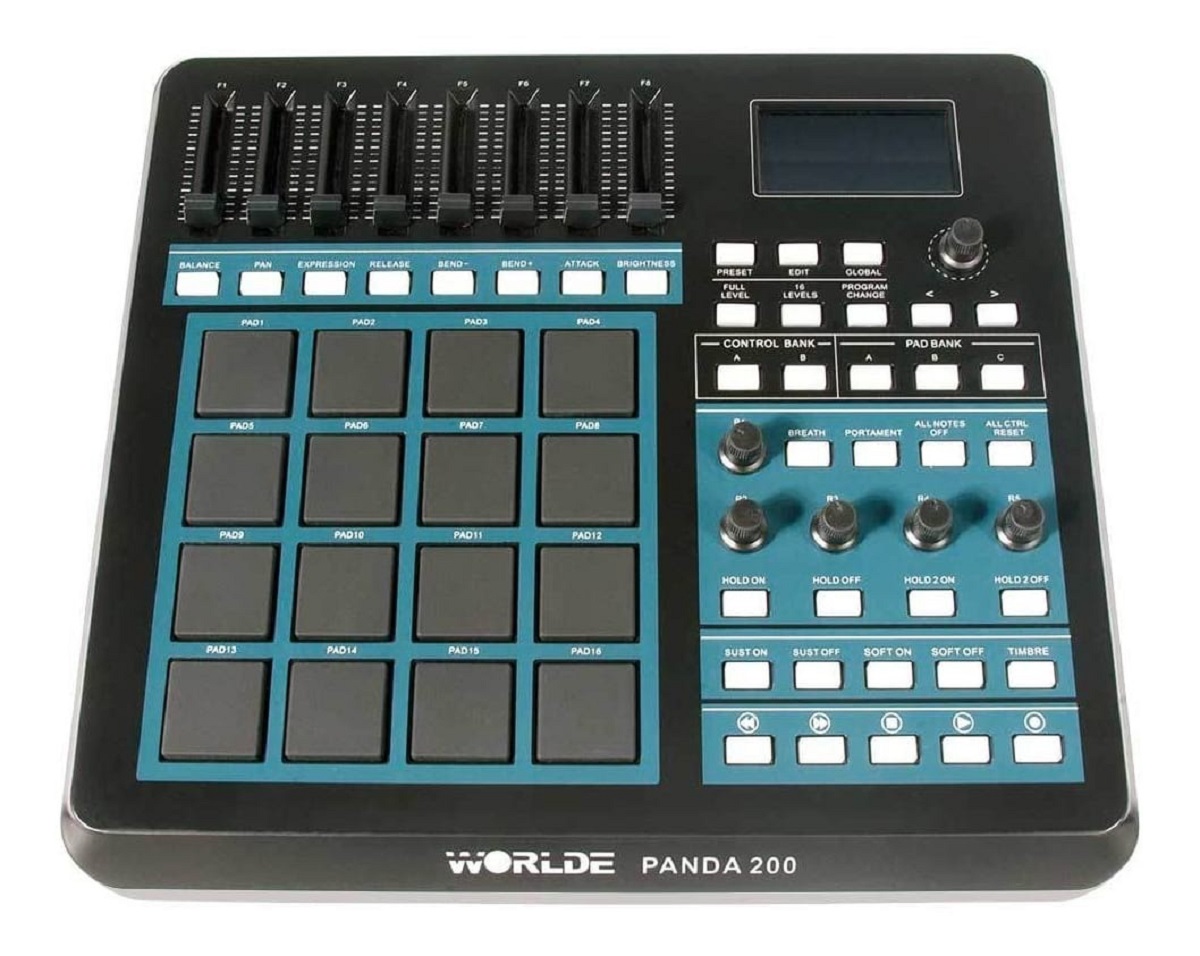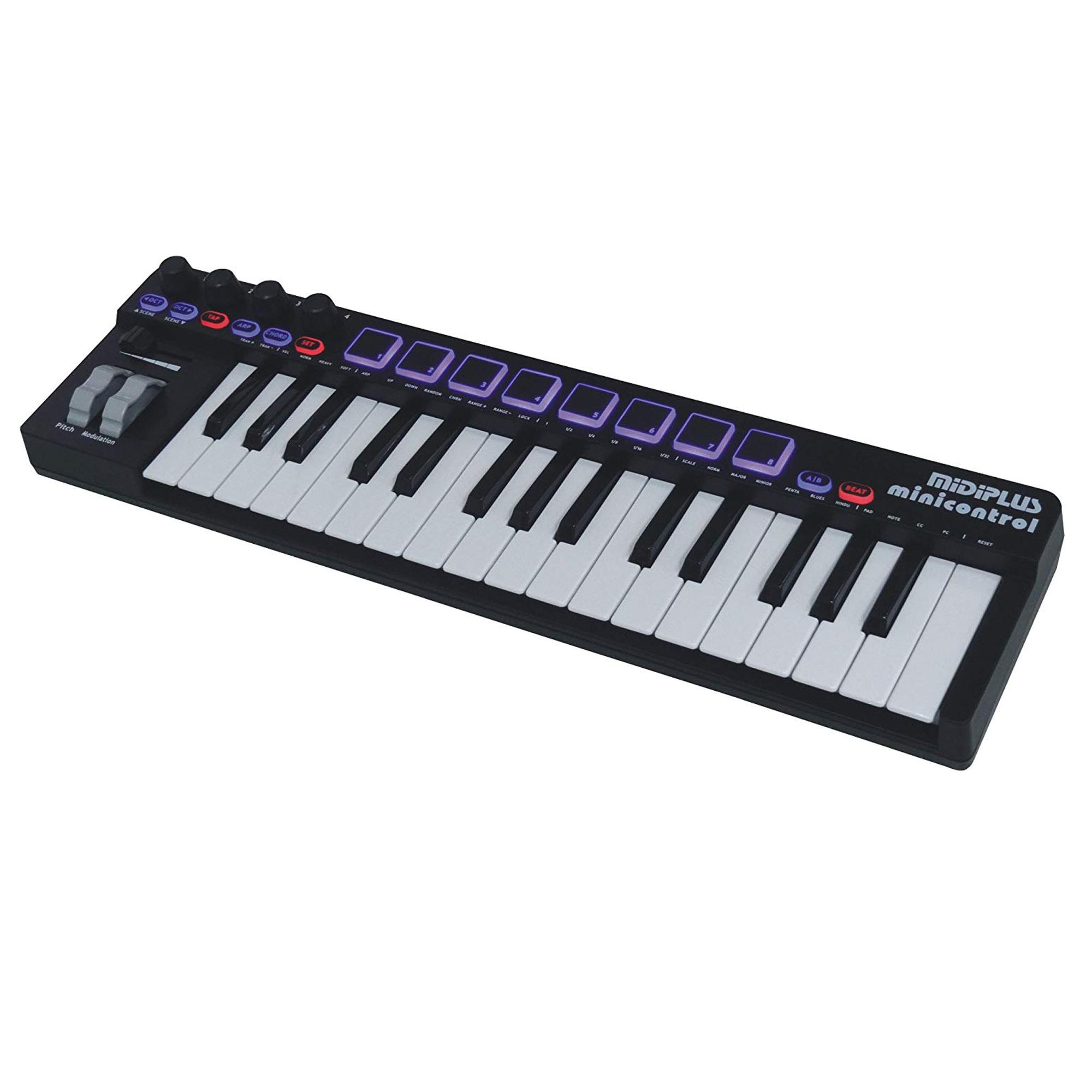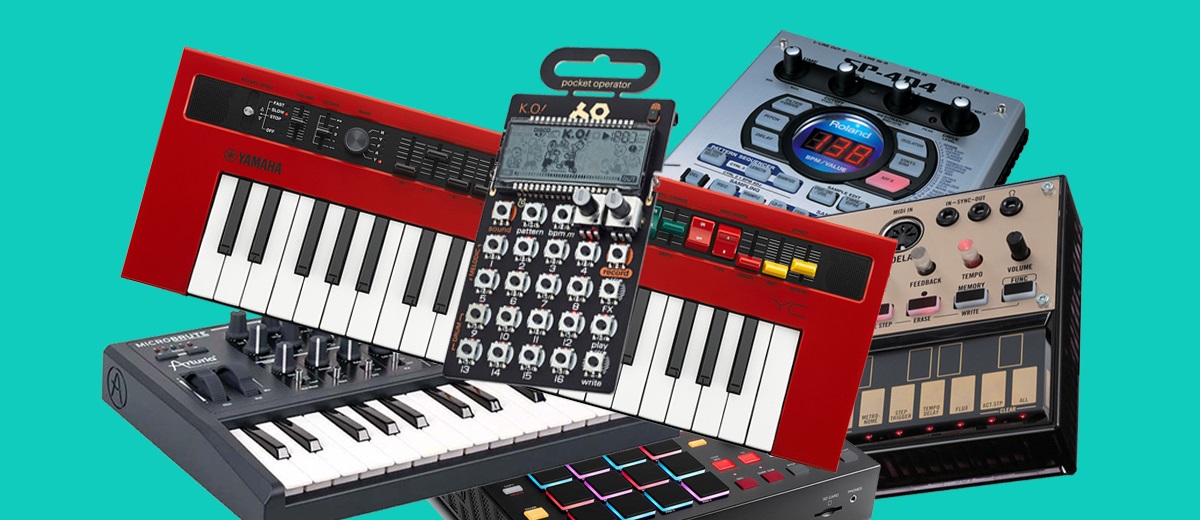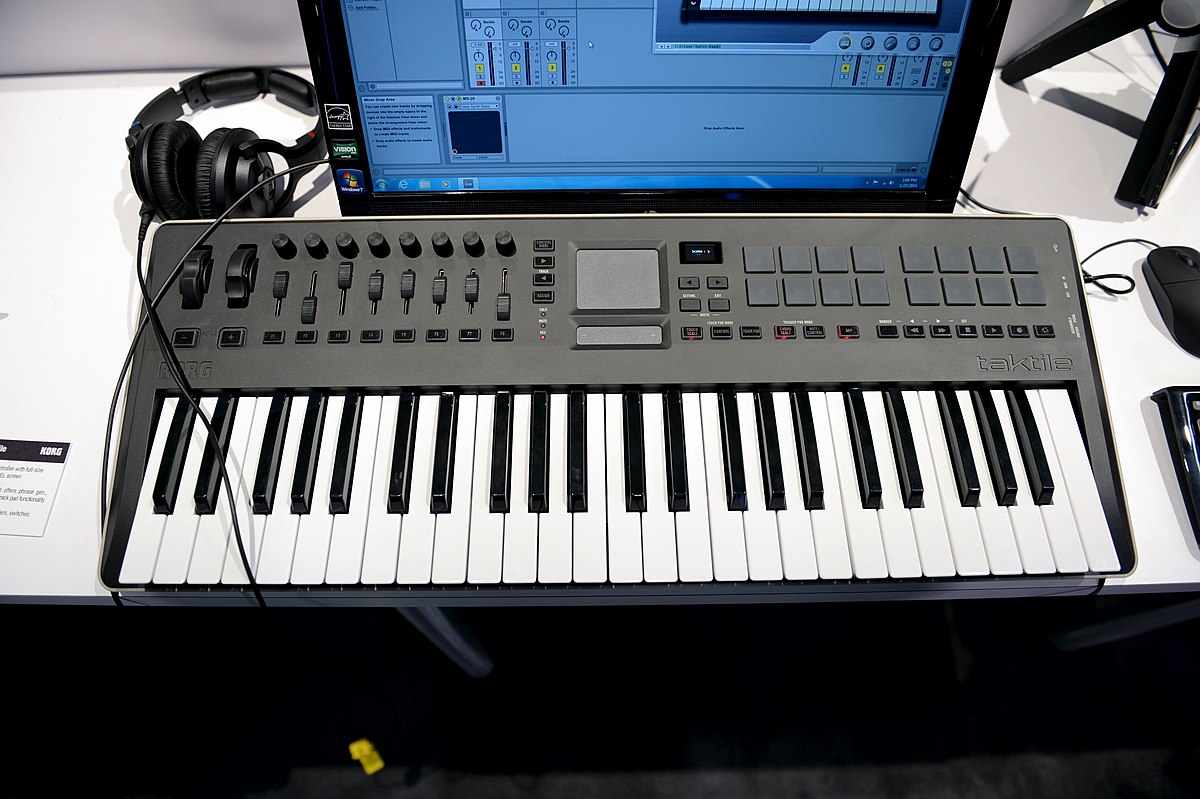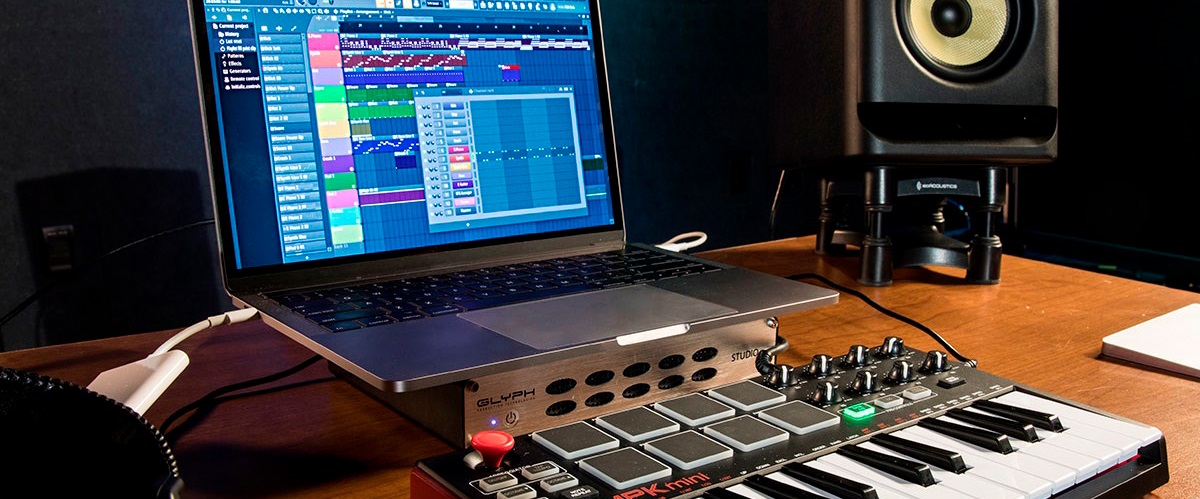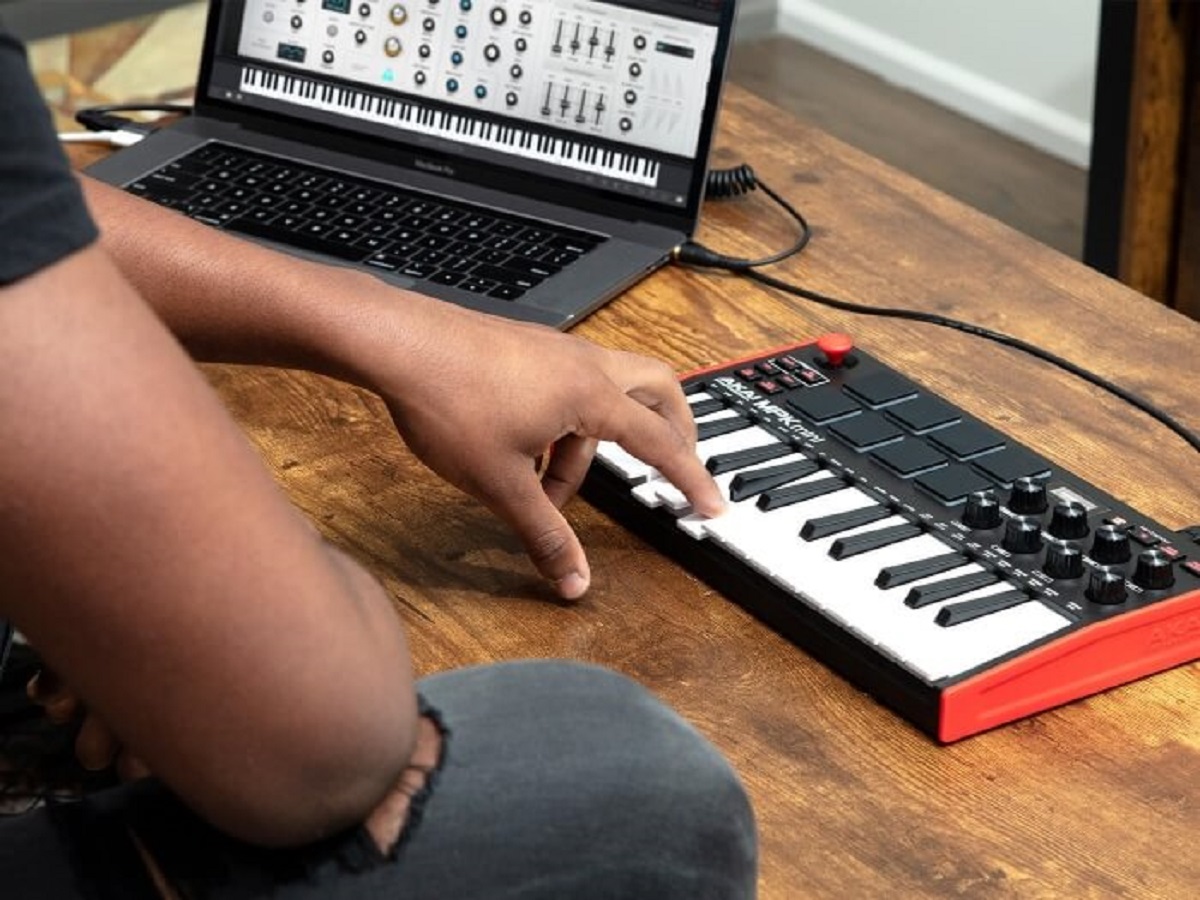Introduction
Are you ready to take your music production skills to the next level? If you've just acquired a MIDI keyboard or are considering getting one, you're in for an exciting journey. With a MIDI keyboard, you can unleash your creativity and produce professional-grade beats and melodies with ease. Whether you're a seasoned producer or a beginner exploring the world of music production, a MIDI keyboard can revolutionize the way you create music.
In this comprehensive guide, we'll explore the ins and outs of making beats with a MIDI keyboard. From selecting the right MIDI keyboard to mastering MIDI mapping and creating captivating drum patterns and melodies, we'll cover everything you need to know to kickstart your music production journey. Additionally, we'll delve into the intricacies of using MIDI effects, recording and editing MIDI, and setting up your Digital Audio Workstation (DAW) for seamless integration with your MIDI keyboard.
By the end of this guide, you'll be equipped with the knowledge and skills to harness the full potential of your MIDI keyboard, unleashing your creativity and producing professional-quality beats that resonate with your unique style. So, let's dive in and unlock the endless possibilities that a MIDI keyboard has to offer in the realm of music production.
Choosing the Right MIDI Keyboard
When it comes to selecting the ideal MIDI keyboard for your music production endeavors, several factors come into play. The first consideration is the number of keys. MIDI keyboards come in various key counts, ranging from compact 25-key models to full-sized 88-key options. If you prioritize portability and space efficiency, a smaller key count may suffice for beat-making and melody creation. However, if you plan to incorporate intricate piano compositions and complex chord progressions into your music, a larger key count would be more suitable.
Another crucial aspect to contemplate is the keyboard’s action. Keyboards with weighted action emulate the feel of a traditional piano, offering a more tactile and responsive playing experience. On the other hand, semi-weighted or synth-action keys provide a smoother, more lightweight touch, ideal for electronic music production and beat-making.
Additionally, consider the availability and functionality of pads, knobs, and faders on the MIDI keyboard. These features can greatly enhance your workflow by enabling seamless control over parameters, drum programming, and MIDI mapping. Furthermore, the inclusion of aftertouch and velocity sensitivity can add depth and expression to your performances and recordings, allowing for nuanced and dynamic musical articulation.
Connectivity is another vital consideration. Ensure that the MIDI keyboard offers versatile connectivity options, such as USB, MIDI DIN ports, and pedal inputs, to facilitate seamless integration with your computer and other music production gear. Compatibility with your Digital Audio Workstation (DAW) is also paramount, so be sure to verify that the MIDI keyboard is compatible with your preferred music production software.
Finally, take into account any additional features that align with your specific music production needs, such as built-in arpeggiators, drum pads, and customizable control layouts. By carefully assessing these factors, you can make an informed decision and select a MIDI keyboard that harmonizes with your creative vision and technical requirements, empowering you to craft captivating beats and melodies with finesse.
Setting Up Your DAW
Before delving into the creative process of making beats with your MIDI keyboard, it’s essential to ensure that your Digital Audio Workstation (DAW) is properly configured to seamlessly integrate with the MIDI controller. Start by connecting your MIDI keyboard to your computer using a USB cable or MIDI interface, depending on the connectivity options available. Once connected, ensure that the MIDI keyboard is recognized by your computer and DAW, and that the necessary drivers are installed.
Next, within your DAW, navigate to the preferences or settings menu to configure the MIDI input and output settings. Here, you’ll be able to select your MIDI keyboard as the input device, enabling it to transmit MIDI data to your DAW for recording and playback. Additionally, you can configure the MIDI output settings to ensure that your DAW can send MIDI data back to the keyboard, allowing for seamless control over virtual instruments and software parameters.
Many modern DAWs offer automatic detection of MIDI devices, simplifying the setup process. However, it’s advisable to verify that the MIDI keyboard is correctly recognized and configured within the DAW’s settings to avoid any potential compatibility issues or performance hitches during music production.
Furthermore, familiarize yourself with the MIDI mapping capabilities of your DAW. MIDI mapping allows you to assign MIDI controls, such as knobs, faders, and pads on your keyboard, to specific parameters within your DAW and virtual instruments. This functionality empowers you to customize your workflow, create dynamic performance setups, and control various aspects of your music production environment directly from your MIDI keyboard.
Once your MIDI keyboard is successfully integrated and configured within your DAW, you’ll be ready to embark on your beat-making journey with a streamlined and efficient setup. By optimizing the connection between your MIDI keyboard and DAW, you can focus on unleashing your creativity and translating musical ideas into captivating compositions with unparalleled fluidity and precision.
Understanding MIDI Mapping
MIDI mapping is a fundamental aspect of harnessing the full potential of your MIDI keyboard within your Digital Audio Workstation (DAW). This functionality allows you to assign specific MIDI controls, such as knobs, faders, and pads, to various parameters and functions within your DAW and virtual instruments. By customizing the MIDI mapping, you can tailor the control layout of your MIDI keyboard to suit your unique workflow and creative preferences, enhancing your efficiency and expressive capabilities during music production.
Most modern DAWs offer intuitive MIDI mapping interfaces that enable seamless assignment of MIDI controls to a myriad of parameters. Whether you wish to manipulate the cutoff frequency of a synthesizer, adjust the levels of individual tracks, or trigger drum samples and loops, MIDI mapping empowers you to exert precise control over your music production environment directly from your MIDI keyboard.
One of the primary benefits of MIDI mapping is its capacity to streamline the music production process. Instead of relying solely on mouse and keyboard inputs to adjust settings and parameters within your DAW, MIDI mapping enables tactile and real-time control, fostering a more immersive and dynamic music-making experience. This hands-on approach not only enhances your creative workflow but also imbues your performances and recordings with a heightened sense of expression and spontaneity.
Furthermore, MIDI mapping facilitates the creation of custom performance setups tailored to specific musical contexts. Whether you’re performing live or crafting intricate studio productions, the ability to map MIDI controls to suit the demands of each musical scenario empowers you to adapt and innovate with unparalleled flexibility.
As you delve into the realm of MIDI mapping, take the time to explore the capabilities of your MIDI keyboard and DAW, experimenting with different control assignments and mappings to discover the most effective and intuitive configurations for your music production endeavors. By harnessing the power of MIDI mapping, you’ll elevate your creative potential, streamline your workflow, and imbue your music with a newfound dimension of control and expression.
Creating Drum Patterns
Drum patterns form the rhythmic foundation of a beat, infusing energy and groove into your music. With a MIDI keyboard, you can intuitively craft dynamic and compelling drum patterns, adding depth and character to your compositions. Whether you’re programming electronic drum sounds or triggering samples and loops, the versatility of MIDI mapping and pad controls on your keyboard empowers you to unleash your rhythmic creativity with precision and flair.
Begin by selecting drum sounds or samples within your DAW or virtual instrument. Many MIDI keyboards feature dedicated drum pads that are specifically designed for triggering percussive elements. Utilize these pads to input drum hits and create rhythmic patterns in real time, allowing for an organic and spontaneous approach to beat-making.
Experiment with different rhythmic patterns, incorporating variations in velocity and timing to infuse your drum sequences with a natural and dynamic feel. By adjusting the velocity of individual drum hits, you can emulate the nuances of a live drum performance, adding subtle accents and dynamics to your patterns.
Furthermore, leverage the MIDI mapping capabilities of your keyboard to assign specific drum parameters, such as pitch, decay, and filter controls, to the knobs and faders on your keyboard. This enables you to sculpt and manipulate the characteristics of your drum sounds on the fly, providing a hands-on and tactile approach to sound design and drum programming.
For electronic music genres, explore the possibilities of creating intricate and evolving drum patterns using arpeggiators and sequencers available within your DAW or virtual instruments. These tools can add rhythmic complexity and movement to your beats, allowing for the creation of compelling and evolving drum sequences that captivate the listener’s ear.
As you delve into the realm of creating drum patterns with your MIDI keyboard, embrace experimentation and spontaneity. The tactile nature of drum programming with a MIDI keyboard encourages a fluid and dynamic approach to rhythm creation, fostering a deeper connection with your music and enabling you to craft drum patterns that resonate with your artistic vision.
Adding Melodies and Chords
With a MIDI keyboard at your fingertips, the process of adding melodies and chords to your compositions becomes an intuitive and expressive endeavor. Whether you’re a proficient pianist or new to playing keys, the versatility of a MIDI keyboard empowers you to explore diverse melodic and harmonic possibilities, enriching your music with captivating musical phrases and chord progressions.
Begin by selecting a suitable instrument or virtual sound within your DAW, such as a piano, synthesizer, or orchestral ensemble, to serve as the foundation for your melodies and chords. The tactile nature of playing keys on a MIDI keyboard allows for nuanced and emotive performances, enabling you to imbue your melodies with expressive phrasing and dynamics.
For creating melodies, leverage the full range of the MIDI keyboard to explore melodic motifs and motifs across different octaves. Experiment with legato and staccato playing techniques, as well as pitch bend and modulation controls, to infuse your melodies with a sense of movement and emotion.
When crafting chords, capitalize on the versatility of MIDI mapping to assign chord voicings and inversions to the pads or keys on your MIDI keyboard. This approach allows for seamless triggering of complex chord structures, facilitating the exploration of rich and harmonically diverse progressions without the need for intricate manual input.
Additionally, consider the use of MIDI effects, such as arpeggiators and chord generators, to augment your melodic and harmonic explorations. These tools can inspire creative melodic patterns and chord sequences, providing a springboard for innovative musical ideas and compositions.
Furthermore, the integration of sustain and expression pedals with your MIDI keyboard can enhance the emotive quality of your performances, allowing for sustained notes and dynamic control over the articulation of your melodies and chords.
As you immerse yourself in the process of adding melodies and chords with your MIDI keyboard, embrace experimentation and improvisation. Allow your musical ideas to flow freely, exploring diverse melodic motifs and harmonic progressions to discover captivating musical expressions that resonate with your creative vision.
Using MIDI Effects
Enhancing your music productions with MIDI effects opens up a realm of creative possibilities, allowing you to infuse your compositions with depth, movement, and sonic intricacies. MIDI effects, such as arpeggiators, chord triggers, and MIDI quantization tools, can profoundly impact the character and expression of your musical arrangements, providing innovative avenues for musical exploration and experimentation.
Arpeggiators are a prominent MIDI effect that can transform static chord progressions into dynamic and rhythmic patterns. By engaging an arpeggiator within your DAW or virtual instrument, you can breathe life into chord sequences, generating cascading arpeggios and melodic flourishes that add momentum and energy to your compositions. The ability to customize arpeggiator settings, such as direction, octave range, and rhythmic subdivision, empowers you to tailor the arpeggiated patterns to suit the mood and style of your music.
Chord triggers are another compelling MIDI effect that simplifies the process of triggering complex chord voicings with a single key press. This functionality is particularly valuable for performers and producers seeking to explore lush and harmonically rich chord progressions without the need for intricate manual input. By harnessing chord triggers, you can seamlessly integrate intricate chord voicings into your music, expanding the harmonic palette of your compositions with ease.
Furthermore, MIDI quantization tools play a pivotal role in refining the rhythmic precision and timing of your MIDI performances. Whether you’re crafting drum patterns, melodies, or chord sequences, MIDI quantization enables you to align and tighten the timing of MIDI events, ensuring that your musical phrases adhere to a consistent and polished rhythmic grid. This precision enhances the overall coherence and groove of your compositions, elevating the impact of your music with professional-grade rhythmic precision.
As you explore the realm of MIDI effects with your MIDI keyboard, consider experimenting with modulation and pitch bend controls to impart expressive nuances and sonic variations to your performances. These controls allow for real-time manipulation of pitch, modulation depth, and vibrato, adding a layer of emotive expression and dynamic character to your musical phrases.
By embracing the creative potential of MIDI effects, you can elevate your music productions with captivating rhythmic patterns, harmonically rich chord progressions, and expressive musical articulations, imbuing your compositions with a heightened sense of creativity and sonic allure.
Recording and Editing MIDI
Recording and editing MIDI data is a fundamental aspect of music production, enabling you to capture performances, refine musical arrangements, and unleash your creative vision with precision and finesse. With a MIDI keyboard as your primary input device, the process of recording and editing MIDI becomes an intuitive and dynamic endeavor, offering unparalleled control over musical expression and arrangement refinement.
When recording MIDI performances, ensure that your MIDI keyboard is properly integrated with your Digital Audio Workstation (DAW), allowing for seamless transmission of MIDI data. With the MIDI keyboard connected and configured, you can record performances in real time, capturing the nuances of your playing, including dynamics, articulations, and pitch variations.
Furthermore, MIDI recording facilitates the creation of layered performances, enabling you to record multiple tracks and musical elements simultaneously. Whether you’re capturing intricate drum patterns, expressive melodies, or complex chord progressions, the versatility of MIDI recording empowers you to build rich and multifaceted musical arrangements with ease.
Once MIDI data is recorded, the editing capabilities within your DAW offer a wealth of tools for refining and enhancing your musical performances. Quantization tools allow for the alignment of MIDI events to a precise rhythmic grid, ensuring that musical phrases adhere to a consistent and polished timing. This precision enhances the cohesion and groove of your compositions, providing a professional-grade rhythmic foundation for your music.
Additionally, MIDI editing tools enable you to manipulate note velocities, lengths, and positions, affording you the flexibility to fine-tune the dynamics and phrasing of your performances. By adjusting note velocities, you can imbue your MIDI performances with expressive dynamics, adding depth and emotion to your musical phrases.
Explore the potential of MIDI editing to experiment with arrangement variations, transpose musical passages, and craft intricate musical motifs. The ability to manipulate MIDI data with precision and fluidity allows for endless creative possibilities, empowering you to sculpt and refine your musical compositions with meticulous attention to detail.
By leveraging the recording and editing capabilities of MIDI with your MIDI keyboard, you can capture inspired performances, refine musical arrangements, and bring your creative ideas to fruition with unparalleled control and artistry.
Conclusion
Congratulations on embarking on a transformative journey into the realm of music production with a MIDI keyboard as your creative companion. Throughout this comprehensive guide, we’ve delved into the myriad facets of making beats, crafting melodies, and sculpting sonic landscapes with the versatile capabilities of a MIDI keyboard. From selecting the right MIDI keyboard to harnessing the power of MIDI mapping, creating captivating drum patterns, and adding expressive melodies and chords, you’ve gained valuable insights into leveraging the full potential of your MIDI controller.
By understanding the intricacies of MIDI effects, recording, and editing MIDI data, you’ve equipped yourself with the knowledge and skills to elevate your music productions with precision, creativity, and expressive depth. The tactile nature of a MIDI keyboard empowers you to infuse your compositions with nuanced performances, dynamic rhythmic patterns, and harmonic richness, fostering a deeper connection with your music and creative vision.
As you continue your music production journey, remember to embrace experimentation, spontaneity, and artistic exploration. The journey of crafting compelling beats and melodies is an ever-evolving process, and your MIDI keyboard serves as a gateway to boundless creative expression and sonic innovation.
Whether you’re a seasoned producer seeking to expand your sonic palette or a budding musician venturing into the world of music production, the versatility and intuitive nature of a MIDI keyboard offer a gateway to limitless musical possibilities. With dedication, passion, and a spirit of adventure, you’ll continue to refine your craft, explore new sonic horizons, and create music that resonates with authenticity and creativity.
So, as you embark on your next musical endeavor, let the melodies flow, the rhythms groove, and the creative spirit soar. With your MIDI keyboard as a steadfast companion, you’re poised to craft compelling compositions, express your unique musical voice, and inspire listeners with the captivating power of your artistry.







